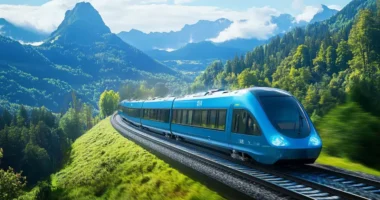Understanding the Scale of Train Accidents
The Indian railway network, popularly known as the lifeline of India, spans a massive infrastructure serving as the primary mode of transport for millions. However, the past five years have seen a concerning rise in train accidents, shedding light on underlying issues in the system. Let’s break down the statistics:
- Total Accidents: 200 train accidents were reported.
- Fatalities: 351 lives lost.
- Injuries: Hundreds sustained injuries, some leading to long-term disabilities.
Categories of Train Accidents
Train accidents can stem from various causes, each warranting a different set of preventive measures. Here are the major categories:
1. Derailments
Derailments have historically been responsible for a significant portion of train accidents. Factors such as outdated tracks, mechanical failures, and operational errors contribute largely to this category.
2. Collisions
Collisions, be it between trains or with external objects on tracks, often result in catastrophic outcomes. Human errors, signaling failures, and inadequate communication protocols are some of the primary causes of collisions.
3. Level Crossing Accidents
Open level crossings present a dangerous interface where roads and tracks intersect. Insufficient safety measures and public awareness at these crossings usually lead to grave accidents.
The Impact of Train Accidents
The consequences of train accidents extend beyond immediate loss of life and injuries. Below is an outline of the broader impacts:
- Individual & Family Trauma: Victims and their families often bear the psychological and financial brunt long after an accident.
- Economic Losses: The halting of train services results in financial setbacks not only for the railway sector but also for businesses and commuters.
- Public Confidence: Frequent accidents can diminish public trust in the railway system, leading to a decline in patronage.
Analyzing the Underlying Causes
To address the problem efficiently, it’s pertinent to analyze the root causes:
1. Infrastructure Challenges
Despite extensive railway networks, many tracks require urgent modernization to handle the increased pressure of contemporary train operations.
2. Technological Deficiencies
The gap between available technology and its effective implementation is glaring. Automation in signaling systems and surveillance could reduce human error-induced accidents.
3. Policy and Management
Inadequate policies and inefficient management at times hinder swift problem-solving processes. Bureaucratic delays often stagnate crucial upgrades and safety enhancements.
Steps Towards Remediation
The response to train accidents should be a multi-level strategy encompassing technology, manpower, and policy implementation. Potential measures include:
1. Upgrading Infrastructure
Investment in robust infrastructure is paramount. Revamping old tracks, integrating high-quality materials, and regular maintenance can prevent derailments.
2. Implementing Advanced Technology
- Automatic Train Protection (ATP): Ensuring train control and signaling are automated can drastically reduce human errors.
- Surveillance Systems: CCTV and real-time monitoring systems can enhance track security and operational efficiency.
3. Policy Interventions
- Strict Regulatory Framework: Implementing stricter safety regulations can drive compliance and accountability.
- Public-Private Partnerships: Encouraging collaborations can inject valuable resources and expertise into the railway sector.
Public Awareness and Education
Public cooperation is just as crucial in minimizing railway mishaps. Educational campaigns aimed at raising awareness about railway safety, especially around level crossings, are important for community engagement.
Conclusion
The statistics on train accidents in India over the past five years highlight a clear call to action. While the challenges are significant, with proactive policies and advanced technology integration, it’s possible to enhance railway safety significantly. Ensuring passengers’ trust in rail travel requires a committed effort in fortifying India’s railway infrastructure and policies to prevent such tragedies from recurring.
“`







